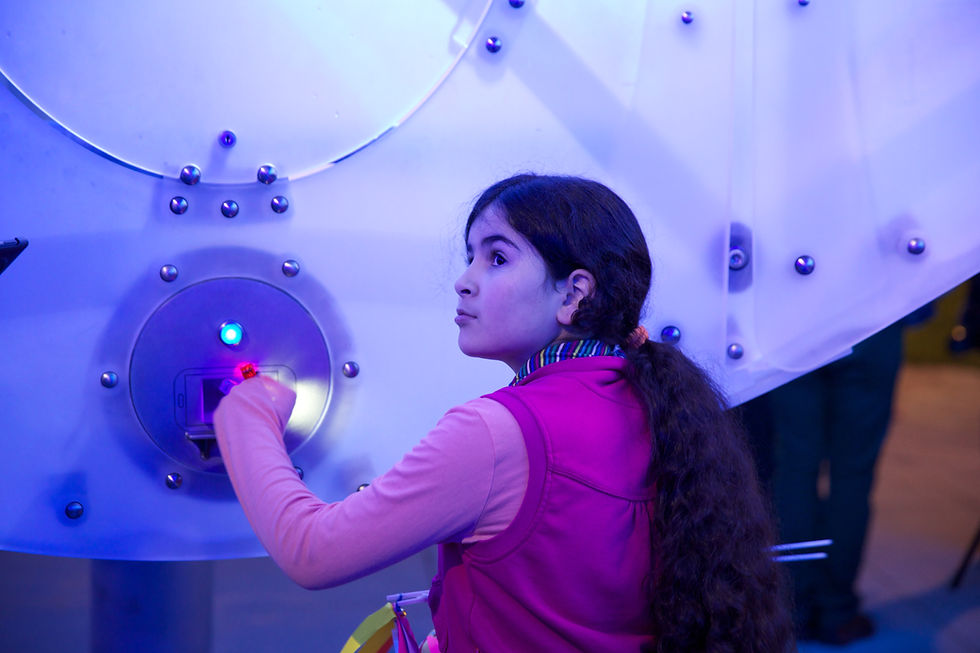Light + Color
- Creative Machines

- Jun 17, 2021
- 2 min read
Light-based sculptures offer an opportunity for art to activate a larger space than the sculpture physically occupies.

With that power comes the responsibility to be intentional with color use. In this piece, Small Talk About the Weather, we wrote an algorithm to process NOAA weather footage and visitor's inputs to create groups of color that work well together at every time.

These projection sculptures use a unique point-source light fixture to project color into the space around the sculpture, washing over hardscape and visitors alike.

Light offers the ability for a sculpture to reveal its inner structure. Controlling the light allows us to choose between an opaque exterior and one that reveals an inner skeleton through overlapping colored shadows.

Point-source projection allows sculptures like Growing Home to activate an entire plaza. In this case, the sculpture projects the history of the region that is now home to San Diego.

Fish Bellies puts people in immersive environments of color. Four controls allow independent control of hue and saturation of different regions. The structure of the sculpture was optimized to control color blending.

Chinook Arc is another sculpture whose internal structure is visible at night. Visitors control the color by waving their hands, colored objects or mobile phones in front of a sensor.

With Cocoon, we sought to create a feeling of envelopment and release along a multi-use path. At night, the inside surface becomes a shadow projection screen for people passing through.

Latent Energy has a color scheme that corresponds to the kinetic energy at different locations in a hydrocarbon molecule.

Ballroom Luminoso uses colored projection to transform a vast space under a freeway in San Antonio. The space is dark enough during the day that the projection is visible. During the brightest part of the day, the suspended fixtures work as conventional sculptural pieces.

Lenses uses LED lighting at night to change the appearance of a facade from pastel to vibrant. The LEDs create an animated window that moves over famous paintings, challenging viewers to guess the larger virtual image.

Texas Rising projects patterns onto the landscape and visitors. Some of the panels contain secrets related to University History. Having multiple pieces around a plaza gave us the opportunity to create a programmed series of color effects that wash over the entire plaza and tie it together.

Multiple sources within Space Disco project a pattern derived from Jupiter's gaseous surface. The overlapping patterns rotate, transforming an entry space into a immersive environment where the walls and floor swim around visitors, giving them a feeling of immersion in outer space.

With Rising Star, I developed a color-changing approach that had the sculpture explore certain 'neighborhoods' on the hue wheel for periods of time. For example, the sculpture spends time exploring the purple-indigo range, with slight variations between the points for 15 minutes. After that the sculpture moves into fall colors and other hue neighborhoods.

Multiple point sources create overlapping fields of color in Elements. Thinking about pairs of color adds complexity to the programming.

Wings Over Water is a kinetic surface onto which colored lighting is projected.



Comments